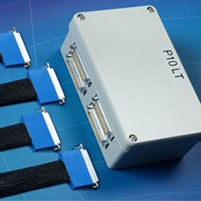You are in: Blog

A Guide to Test Harness Design and Construction
One of the many challenges involved in cable harness design is for test harnesses used during test and qualification. During this stage, the designers need to prove that their systems are reliable and functioning within the specified design parameters. To this end, the design of the tests themselves and selection of the right test facilities becomes very important.
Tekdata have many years of experience in designing complex, multi-core cable constructions for many electronic systems working in Aerospace, Defence and Space applications and have developed the 4 stage “common approach” to cable design in order to identify and reduce risk at the earliest possible point during the system development process.
Once the system is designed and built, testing can then be approached with a higher level of confidence.
This article aims to outline the challenges presented and gives an overview of where Tekdata have recently provided a customer with an elegant solution to their problem.
The design and construction of any given electronic system is usually extremely time consuming and complex. Once the prototype systems are built however, the qualification and testing phases can be equally demanding. In many cases, the system designers hand over their products to a test engineer who then has the main input into the selection of facility, the test set-up and supply of the required test hardware.
One of the key components of any test set-up is the electrical test harnesses as, during testing, the harnesses become an extension of the system itself, supplying power and transmitting data. As such, the harness design and construction should be given the same amount of consideration as the system itself.
In too many cases however, problems experienced during testing can be traced back to the original test design and set-up, or failure of component parts such as the test harnesses.
For example, if a high-end communication system which requires high levels of RFI/EMC integrity uses test harnesses which are not screened to the same level as, or better than, the test specification itself, then problems will inevitably occur during testing. Although an obvious observation, this situation will be far too familiar to many design and test engineers.
Another reason that the test harnesses are an interesting challenge is that it is known that 90% of EMC test failures attributed to defective harnesses (either system or test) actually occur elsewhere within the system. Stray signals which can be generated from various “noisy” pieces of hardware have been known to emanate from the surface of screened cables thus, giving false-fails. Given that in most cases the test harnesses are necessarily longer than cable paths within the system and can in some instances act as aerials, these stray signals tend to propagate onto the test harnesses.
It can be understood from the above dialogue that test harness design and construction is extremely important to the success of any given electronic systems’ test campaign.
A recent example of where Tekdata’s expertise in test harness construction has been called upon to great effect is the supply of a set of test harnesses for a Space Flight electronic sub-system on an instrument being incorporated into an ESA Space mission. The system testing calls for multiple screened twisted pair interconnections going into common destination points and this requires signals to be split whilst maintaining screen integrity at high frequency levels.
Tekdata’s solution to this particular challenge was to develop a “splitter box” arrangement that allows signals to be split whilst maintaining the highest levels of RFI/EMC stability.
These boxes are currently performing extremely well and the customer is able to carry out testing with the knowledge that the risk of false-fails has been reduced to a minimum.
For further information on the 4 stage common approach to cable construction design or the design and development of reliable Test Harnesses, please contact Terry McManus Terry.McManus@tekdata-interconnect.com
Article first published : 8/8/2014